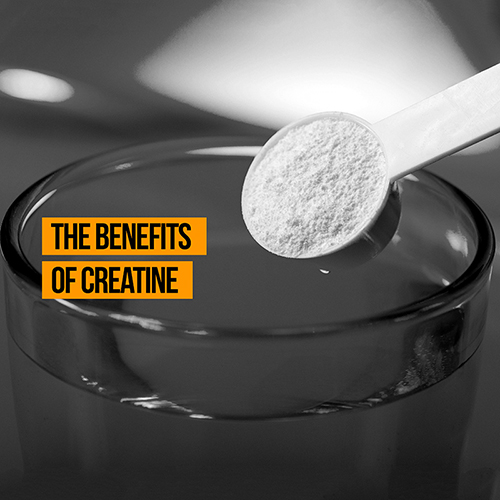Creatine has become a hot commodity in the world of health and fitness in recent years. Used across the board from bodybuilders to endurance athletes and across both sexes, the most heavily researched supplement in the world is undoubtedly misunderstood. But what exactly are the benefits of creatine and how can it help your performance? Our resident lab rat Toby Cryne investigates.
Pretty much every gym in the UK, no matter how commercial and yuppified, will sell some form of sports supplements. The benefits of creatine, proteins and fat burners are touted everywhere from forums to advertising murals in the gym changing room, but what actually are these supplements, what do they do and who can benefit from them? The answer, at least in terms of creatine is, just about everyone. Creatine may have given the impression of being something meant merely for the large muscled and fake tanned, but evidence suggests that the benefits of creatine can transcend all sports – even endurance.
Ideal for those who require great levels of explosive power or those looking to gain lean muscle mass, creatine is a common supplement that creates over $100 million in annual sales per year.
A Brief History
Creatine monohydrate first hit the shelves of supplement stores following its introduction by Experimental and Applied Sciences (EAS) in 1993. Since the 90’s, the supplement has become the most heavily researched sports product on the market today, more so than even anabolic steroids. Scientifically proven to increase muscle mass gains and strength, the supplement has become popular with bodybuilders, sprinters and power lifters.
What is Creatine?
Creatine, much like every other sports supplement on the market to date, is an outsourced way of increasing the volume of a naturally occurring enzyme in the body. The simple science being that as creatine in the blood aids muscle recovery, increasing the volume of the substance will increase the rate of muscle recovery. Found in all animals and even some vegetables, creatine is one of the fundamental enzymes in muscle recovery. Let’s break it down a little….
The Science
During exercise, the body utilises three different systems in order to provide energy to muscles which are dependent on the type of exertion being performed; the ATP-CP system, the anaerobic system and the aerobic system.
The ATP-CP system utilises an energy source known as adenosine triphosphate (ATP) and creatine phosphate (CP). ATP-CP is the main source of energy when high demands are placed on the muscles during fast contractions or heavy exertion.
Due to the rapid nature of the contraction, the speed in which the energy is transferred needs to be equally as fast. As such, the body will turn to the ATP system as it requires no oxygen, creates no lactic acid and is instantaneous. The downside to the system is that only a short amount of ATP is stored in the body at any one time – enough for about ten seconds worth of energy.
When the contraction is complete, creatine phosphate goes to work to quickly restore the lost ATP. It stands to reason that more creatine equates to a greater and faster replacement of ATP in the body – allowing the athlete to perform more contractions with a shorter recovery time following the exertion. Simples!
How it Affects You
As ATP can only be used for contractions of up to ten seconds (roughly), the body will quickly shift over to the lactic acid system when the ATP has been depleted. Following the completion of a weight lifting set or a 60m sprint, the body needs to replenish the used ATP and can refill up to around half of the natural stores within about 90 seconds or full in about three minutes – hence why bodybuilders time their rest periods between sets. The benefits of creatine in bodybuilding have been recognised for many years, but these benefits are also transferable to other sports.

How to Use it
As creatine supplements directly increase the rate and amount of ATP that can be restored during training, if one were bodybuilding and consequently lifting, then one’s recovery rate and therefor amount of weight lifted would increase at a greater rate. This allows for more rapid strength and size gains.
Creatine comes in the form of a white powder or capsule and is best taken with a plenty of water due to its taxation on the liver. As creatine is an external substance and the body has to break it down in the liver it is ill advised to use the supplement alongside other chemicals that put stress on the organ such as alcohol. Anecdotal evidence seems to suggest that creatine absorbs better when consumed with fast glycaemic sugars such as fruit or juices.
Should I Use it?
As creatine is known for its water retentive properties, it is best used in loading phases out of competition. It will also make muscles appear softer and give the appearance of more fullness – though this is temporary and subsides once the substance is no longer in use.
Ideally suited to those wanting to build lean muscle and create rapid strength gains, creatine is ideal for any person who performs fast muscle contractions – no matter the sport.



